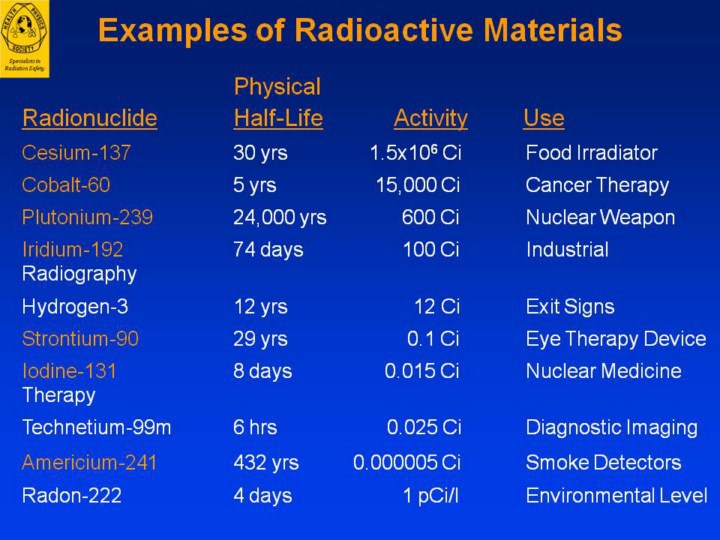| front |1 |2 |3 |4 |5 |6 |7 |8 |9 |10 |11 |12 |13 |14 |15 |16 |17 |18 |19 |20 |21 |22 |23 |24 |25 |26 |27 |28 |29 |30 |31 |32 |33 |34 |35 |36 |37 |38 |39 |40 |41 |42 |43 |review |
 |
Examples of Radioactive Materials
•Radioactive
materials emit ionizing radiation. They are used in medical diagnosis
(nuclear medicine), medical therapy (cancer treatment), industry (food
irradiation), and for research.
•Many
radioactive materials, including radioactive waste, are commercially
shipped in special containers.
•A
radionuclide is chemically identical to and behaves in the body the same
way as the non-radioactive form of the element. For example,
radioactive iodine (e.g. I-131) is concentrated in the thyroid in the
same way as non-radioactive iodine (i.e. I-127).
•Quantities
of radioactive material (i.e. activity) range from trivial amounts in
typical laboratories, to much larger quantities, such as in nuclear
reactors.
•Half-lives
can range from seconds to millions of years.
•The
nuclides that are in orange are those that are considered to be
potential nuclides that could be present in a radiological dispersal
device.
|